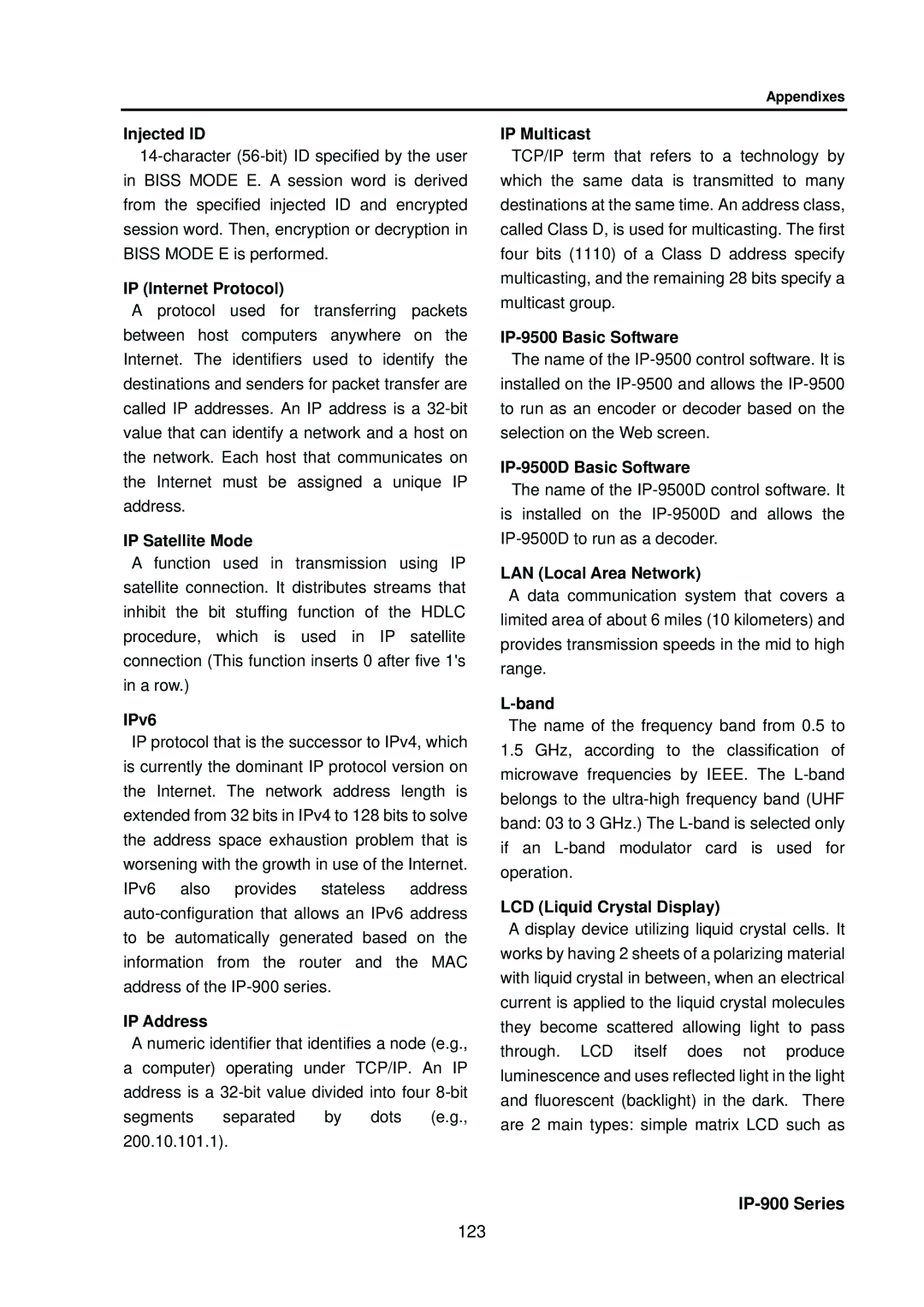Appendixes
Injected ID
IP (Internet Protocol)
A protocol used for transferring packets between host computers anywhere on the Internet. The identifiers used to identify the destinations and senders for packet transfer are called IP addresses. An IP address is a
IP Satellite Mode
A function used in transmission using IP satellite connection. It distributes streams that inhibit the bit stuffing function of the HDLC procedure, which is used in IP satellite connection (This function inserts 0 after five 1's in a row.)
IPv6
IP protocol that is the successor to IPv4, which is currently the dominant IP protocol version on the Internet. The network address length is extended from 32 bits in IPv4 to 128 bits to solve the address space exhaustion problem that is worsening with the growth in use of the Internet. IPv6 also provides stateless address
IP Address
A numeric identifier that identifies a node (e.g., a computer) operating under TCP/IP. An IP address is a
IP Multicast
TCP/IP term that refers to a technology by which the same data is transmitted to many destinations at the same time. An address class, called Class D, is used for multicasting. The first four bits (1110) of a Class D address specify multicasting, and the remaining 28 bits specify a multicast group.
IP-9500 Basic Software
The name of the
IP-9500D Basic Software
The name of the
LAN (Local Area Network)
A data communication system that covers a limited area of about 6 miles (10 kilometers) and provides transmission speeds in the mid to high range.
L-band
The name of the frequency band from 0.5 to
1.5GHz, according to the classification of microwave frequencies by IEEE. The
LCD (Liquid Crystal Display)
A display device utilizing liquid crystal cells. It works by having 2 sheets of a polarizing material with liquid crystal in between, when an electrical current is applied to the liquid crystal molecules they become scattered allowing light to pass through. LCD itself does not produce luminescence and uses reflected light in the light and fluorescent (backlight) in the dark. There are 2 main types: simple matrix LCD such as
